Yates Account
Join now
Create a Yates account today!
Sign up to join the Yates Garden Club for monthly e-mails packed with seasonal inspiration, tips for success & exclusive promotions.
Plus if you’re a Garden Club member you can take part in the Yates Growing Community - a blog to share successes, get advice & win prizes in fun challenges along the way!

Forgot password
Enter the email address associated with your account, and we'll email you a new password.
Spring continues to be all about fabulous flowers; sowing flower seeds and planting perennials to fill garden beds and pots with eye-catching colour over summer.
Sunflower Sensations

Sunflowers are the blooms that we most associate with summer. And they’re so easy to grow from seed! They make a great school holiday seed-sowing project for kids, too. Kids will be sure to vote for the extra tall (up to 5m!) Sunflower Ginormous FlowerZilla with its classic, sun-facing, large yellow heads.
It's easy to grow sunflowers in a garden, just choose a spot in the garden that receives full sun and is sheltered from strong winds. Prepare the planting area well by digging in Yates Dynamic Lifter Organic Plant Food. Sow seeds directly where they are to grow and cover with soil. Firm down and water well, and keep the soil moist until they have germinated.
Once seedlings are approximately 5 cm, it's a good idea to mulch with an organic mulch, like bark chips, woodchip or pea straw. When flower buds start to form, feed the sunflowers with Yates Thrive Rose & Flower Granular Plant Food.
TIP: For an added boost, apply Yates Thrive Roses & Flowers Liquid Plant Food.
Delightful Dianthus
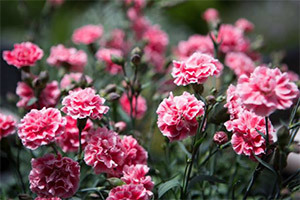
Dianthus are a gorgeous family of flowers that bring cottage style, beautiful colour and fragrance to garden beds, borders and pots. Look out for these two delightful new dianthus from Living Fashion in your local garden centre:
-
Dianthus ‘Sugar Plum Coral’ (pictured) has dark pink buds followed by very pretty coral to deep pink ruffled perfumed flowers which are held above clean blue grey foliage.
-
Dianthus ‘Sugar Plum Raspberry’ has dark crimson buds followed by bright raspberry pink ruffled blooms with an exquisite fragrance. The flowers perfectly compliment the blue grey foliage.
These fabulous new dianthus varieties have their peak flowering period in Spring and can also repeat bloom. They’re compact plants, growing to around 30 – 40 cm high and 40 cm wide.
Dianthus create beautiful container displays, brightening up decks, patios and balconies in Spring. They’re also ideal border and edging plants, can be mass planted as a ground cover or used to fill small gaps in garden beds and perennial borders. They’ll do well in either full sun or part shade and will tolerate dry conditions once established, though appreciate a regular deep watering during dry conditions.
Maintenance is as simple as removing spent flower heads. You can also cut dianthus flower stems for a delightfully perfumed floral arrangement.
Every week during periods of foliage growth and flowering feed dianthus with Yates Thrive Roses Flowers Liquid Plant Food. It’s as easy as mixing 1-2 capfuls in a 9 L watering can and applying over and around the plant. Yates® Thrive® Roses & Flowers Liquid Plant Food includes nitrogen for healthy leaf growth and potassium, to encourage lots of beautiful flowers.
Grow a Butterfly Field
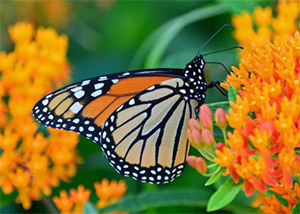
The sight of colourful butterflies fluttering around the garden is pure delight. Not only do they bring a smile to your face, they can also help pollinate some types of flowers.
It’s important for gardeners to grow a variety of plants that flower throughout the year, so butterflies are attracted into the garden and provided with a source of food.
Yates Butterfly Field Beneficial Insect Mix is a blend of 33 colourful pollen and nectar rich flowers to attract butterflies and beneficial insects into the garden and provide them with pollen and nectar over a long period. It will also provide food for caterpillars, helping to nurture the butterfly life cycle.
The mix contains butterfly attracting and beautiful flowers like cosmos, marigold, sunflower, zinnia and California poppy. This mix also includes Swan plants and Asclepias, to make it especially attractive to Monarch butterflies. Yates® Butterfly Field will start flowering from around 10 weeks after sowing. Results will vary depending on the climate and time of year.
Yates® Butterfly Field is quick and easy to sow and grow. Find a sunny spot in a garden bed, enrich the soil with some Yates Dynamic Lifter Organic Plant Food, scatter the seed thinly over the soil surface and then rake in lightly, so the seed is around 3 mm deep. Firm down, water gently and keep moist while the seeds germinate, and seedlings establish.
To keep the plants looking tidy and prolong the flowering season, remove spent flower heads regularly. Otherwise leave them to mature and self-seed. Feed the flower patch every 1 – 2 weeks with Yates Thrive Flower Fruit Soluble Fertiliser, which is a complete plant food that’s boosted with additional flower-promoting potassium.
Every pack of Yates Butterfly Field Mix seeds helps to support the Monarch Butterfly New Zealand Trust, with their great work helping to locate, protect, enhance and create overwintering sites of the Monarch butterfly in New Zealand.
Butterfly hint: butterflies will enjoy a saucer of muddy water to drink from. Yes, muddy! The muddy water provides moisture, salts and minerals.
Pretty Petunias
Petunias are among the most widely grown summer flowers, both for their outstanding beauty and for their natural pest repellent properties. In fair warning, petunia germination can be a little challenging. The seeds must be exposed to some light but this, of course, makes them vulnerable to drying out. Lightly press the tiny seeds of Petunia Neptune Shades into the surface of some Yates Black Magic Seed Raising Mix. Keep the pot in a shaded spot and cover with plastic wrap or a sheet of glass. Avoid dislodging the tiny seeds by watering with a mister or by wetting from the base. After germination, transplant to larger pots and then into a sunny spot in the garden.
Dahlias and Cosmos

Dahlias bring beautiful bold flowers into the garden during summer. They come in a gorgeous range of colours from whites, buttery cream, yellow and salmon through to bright pink, rich red and multi-toned flowers. It’s hard to believe one type of plant can have so many flower shapes, which include pompoms, anenomones, cactus, single and collarette. Flowers can be small or grow to the size of a dinner plate. Dahlias can be grown from tubers and take around 2 months to flower. Dahlias can also be grown from seed, such as Yates Dahlia Cinderella, which is a compact dahlia that produces a long lasting display of bold and bright blooms. It’s ideal for massed garden colour, borders and pots and the plants can continue to perform for years.
Before planting dahlia tubers or sowing seed into a sun drenched spot in the garden, enrich the area first with some Yates Dynamic Lifter Organic Plant Food which will provide the new plants with gentle, slow release organic nutrients as they establish.
It’s also time to sow cosmos, which fill the summer garden with beautiful bee attracting flowers. Yates Cosmos Sensation has very pretty flowers in white, rose and crimson. Growing to almost a metre tall it has feathery foliage and makes a lovely backdrop in a garden bed.
To promote lots of stunning dahlia and cosmos flowers, feed plants each week with Yates Thrive Flower Fruit Soluble Fertiliser, which provides a complete and balanced diet of nutrients as well as being boosted with additional potassium to encourage flowering. Keep the soil moist and regularly trim spent flowers or cut them for a vase – both dahlias and cosmos make lovely cut flowers.
Pest control tip: aphids can be common on tender fresh new seedlings. Look out for tiny green, black, brown or grey insects hiding in amongst the leaves. A quick spray with Yates Rose Gun Spray Ready to use will easily control damaging aphids.
Plum Gorgeous
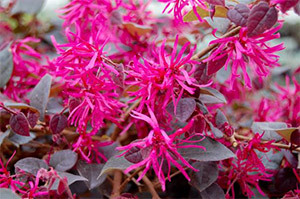
If a shrub with year-round deep purple foliage and intriguing pink tasselled flowers in Spring and Autumn sounds wonderful, then you need a Loropetalum ‘Plum Gorgeous’ in your garden!
Growing to around 1.5 m tall and 2 m wide, Loropetalum ‘Plum Gorgeous’ maintains a naturally dense domed habit and can be used in mixed garden beds, grown as an informal hedge or makes a stunning feature plant. It suits modern or cottage style gardens and its beautiful foliage creates interest throughout the year.
It grows well in either full sun or part shade in well-drained soil. Once established it tolerates dry conditions however will look its best if watered during the hottest weather. Each spring and autumn feed Loropetalum with Yates Thrive Granular All Purpose Plant Food. Spread the granules around the root zone and water in well.
Yates® Thrive® Granular All Purpose Plant Food contains a balanced blend of nitrogen, phosphorus and potassium, plus trace elements, to encourage healthy leaf growth, a strong root system and lots of beautiful flowers.
If required, Loropetalum ‘Plum Gorgeous’ can be trimmed to shape once flowering has finished.
Images and Plum Gorgeous information courtesy of www.pga.com.au
Garden Wizardry
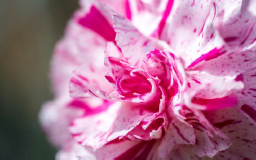
Dianthus have been pretty garden favourites for many years and through clever plant breeding there’s now a stunning new dianthus called ‘Pinball Wizard’. Its highly fragrant, unique pink speckled double flowers smother the plant during spring, on stems that are long enough to pick for a vase.
They’re small neat and compact plants that grow to around 30 cm tall and 40 cm wide and thrive in an airy spot in either full sun or part shade in both garden beds or pots. They’re ideal for bringing colour and fragrance to an outdoor entertaining area, courtyard or patio.
Dianthus ‘Pinball Wizard’ is hardy in both hot and cold conditions and is dry tolerant once established, requiring only an occasional deep watering in summer.
When planting a new dianthus in a garden bed, enrich the soil in the planting hole by mixing in some Yates Thrive Natural Blood Bone with Seaweed. It contains NZ seaweed to encourage root growth as well as being a natural source of organic slow release nutrients.
When growing dianthus in a container, choose a pot with good drainage holes and fill with a good quality potting mix like “Yates® Premium Potting Mix.”:
Once the plant has established, feed every fortnight with Yates Thrive Roses Flowers Liquid Plant Food, which is a complete and balanced fertiliser to encourage healthy leaf growth as well as being boosted with additional potassium to promote prolific flowering. To help repeat blooming, trim off the spent flowers.
Cut flower tip: to enjoy the maximum fragrance, pick the flowers when they’re almost fully open.
Dianthus ‘Pinball Wizard’ information and images courtesy of www.livingfashion.co.nz








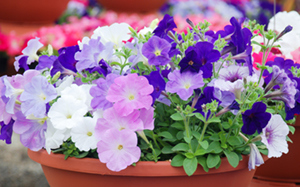








Share
Share this article on social media